As I write this piece, history is being created. Here in India. It’s no doubt a historical day for every citizen of the country here and all Indians around the world. And it took all of five centuries and prayers of generations to achieve all that I see happening in front of me on the television screen right now. The foundation stone laying ceremony of the Ram Mandir in Ayodhya, being performed by none other than the honorable Prime Minister of our country, Narendra Damodar Modi.
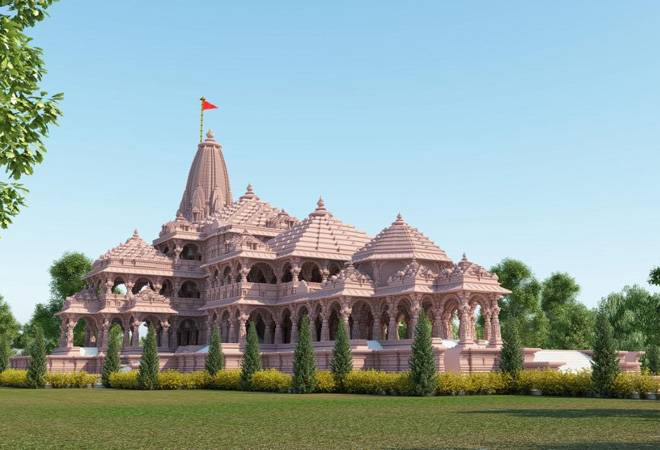
Ayodhya is a city situated on the banks of holy river Saryu in the Indian state of Uttar Pradesh. Also known as Saket, it is the birthplace of Lord Shri Ram and setting of the great epic Ramayana. Owing to the belief as the birthplace of Bhagwan Shri Ram, Ayodhya (Awadhpuri) has been regarded as first one of the seven most important pilgrimage sites (Mokshdayini Sapt Puris) for Hindus. The city of Ayodhya was the seat of the Sun Dynasty rulers and a very sacred city, according to Hindu scriptures. According to Jain religious scriptures, the first Tirthankara, Adinath and four other Tirthankaras were born in the city of Ayodhya.
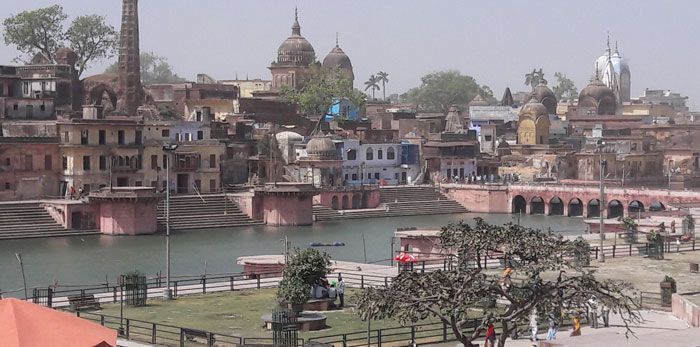
When I say it is a proud day for all Indians, it truly is. Despite Ram Janmabhoomi site in Ayodhya being an issue of dispute between two religious communities all through history, the tales of communal harmony and brotherhood between them in Ayodhya has no less been talked about. And by the residents themselves who narrate incidents of their visit to the court during the process of litigation together with members of the other community. And on many occasions even using the same rickshaw. And when the final verdict from the Supreme Court of India came in favor of Ram Mandir to be built on the disputed site, they still remain close friends.

That’s the India we have grown up in, respecting different religions and where some of our best friends in life are those who belong to the other community. That’s what Lord Ram stood for. Harmony & brotherhood. And hence it is so heartening when you see that the special invitees list, despite the restrained celebrations limiting attendees due to the virus, include names like Md.Sharif, a Padma Shri recipient and a social worker who has been performing last rites for over 20,000 unidentified and unclaimed dead bodies for the last 27 years and Iqbal Ansari a former litigant.
The Ram Mandir (temple) will be built as per the design prepared by renowned architect Chandrakant Sompura way back in 1989. Based on his design, which have recently been modified to include five domes instead of the two planned earlier, artisans have been working in several locations, carving the stones for the temple construction. Sompura comes from a family that has a long history of designing temples. His father Prabhakar Sompura, was the architect of the Somnath Temple in Gujarat and the temple in Mathura, the mythological birthplace of Lord Krishna. You could read my post Lord Krishna travels to town and our home to learn more about him and his travels.
Chandrakant Sompura who followed his father’s footsteps has designed 131 temples, along with his sons Nikhil and Ashish. This includes the Swami Narayan Temple in Gandhinagar, Ambaji Temple in Palanpur and several others. According to him, special pink stones from Bansi Paharpur in Rajasthan are being used for the temple.
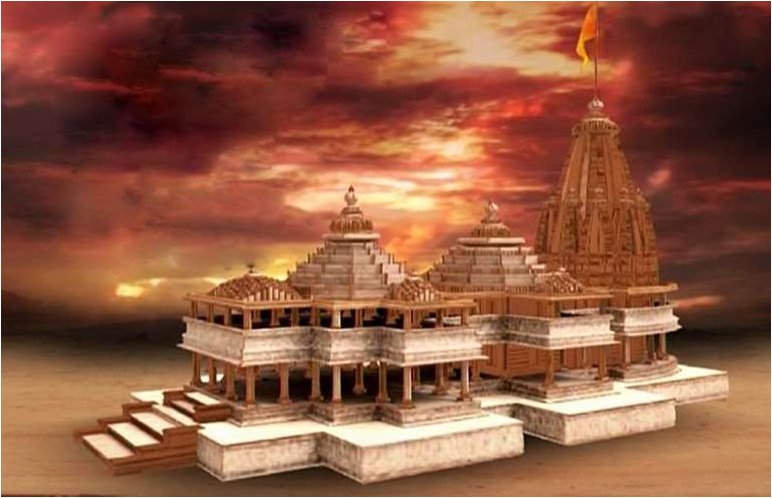
According to Hindu mythology, Rama was one of the ten avataars of Lord Vishnu, the cosmic preserver. To keep a promise he had made, Vishnu was born as the first son of King Dasharath and crown prince of the kingdom of Kosala. Ayodhya, the capital of Kosala, is believed to be Rama’s birthplace. Rama was sent to the forest with his wife and brother to fulfill his father’s promise to his step mother. In the course of these 14 years, Rama’s wife was abducted by a demon called Ravana and an epic war was waged to regain her. A victorious Rama returned to rule from Ayodhya for many years.
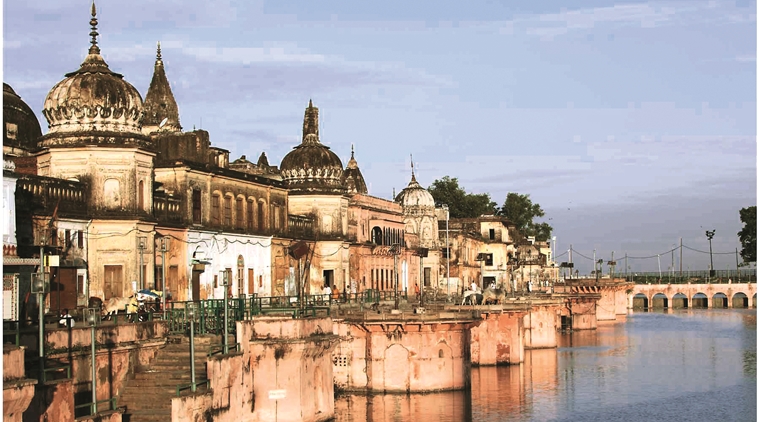
Ram ki Paidi is a series of ghats on the bank of River Saryu. The river front brings forth an outstanding landscape especially on a floodlit night. These serve as platforms to devotees who it is said, come to wash away their sins by taking a dip in the river. This is how it probably would look like when five lakh Diyas (earthen lamps) were lit last night to celebrate the foundation stone laying ceremony of Ram Temple today. The festivities though would continue for the next few days and nights.
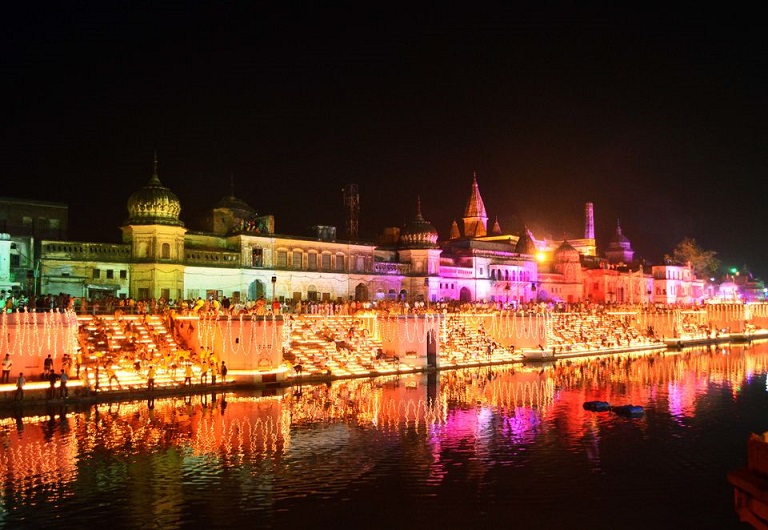
Ram Janmabhoomi is aleady one of the major pilgrimage centres for the Hindus of India. There is a vast complex where there are remnants of an old temple. This temple is believed to be the site of a palace where Lord Ram was born. Another part of the complex houses a mosque that was built here during the Mughal era. The court has now allocated a seperate site for the construction of a new mosque. If one looks beyond the bitter dispute for generations over the Ram Janmabhoomi issue, Ayodhya is the perfect example of how India has assimilated various religions and cultures as part of her social fabric and how some of these differences exist together as parts of a beautiful whole. Time to take you around a bit as one enters Ayodhya and proceeds towards the proposed Ram Janambhoomi temple complex area. But before that a little about Shri Hanuman and the Battle of Lanka.

There are many theories related to Hanuman’s birth and childhood. But his story becomes much more relevant in the events of the Ramayana. After Rama and his brother Lakshmana, searching for Rama’s kidnapped wife Sita arrive in Kishkindha, Rama’s newfound ally, the monkey king Sugriva, agreed to send scouts in all four directions to search for Rama’s missing wife. To the south, Sugriva sent Hanuman and some others, including Jambavan, the king of bears.
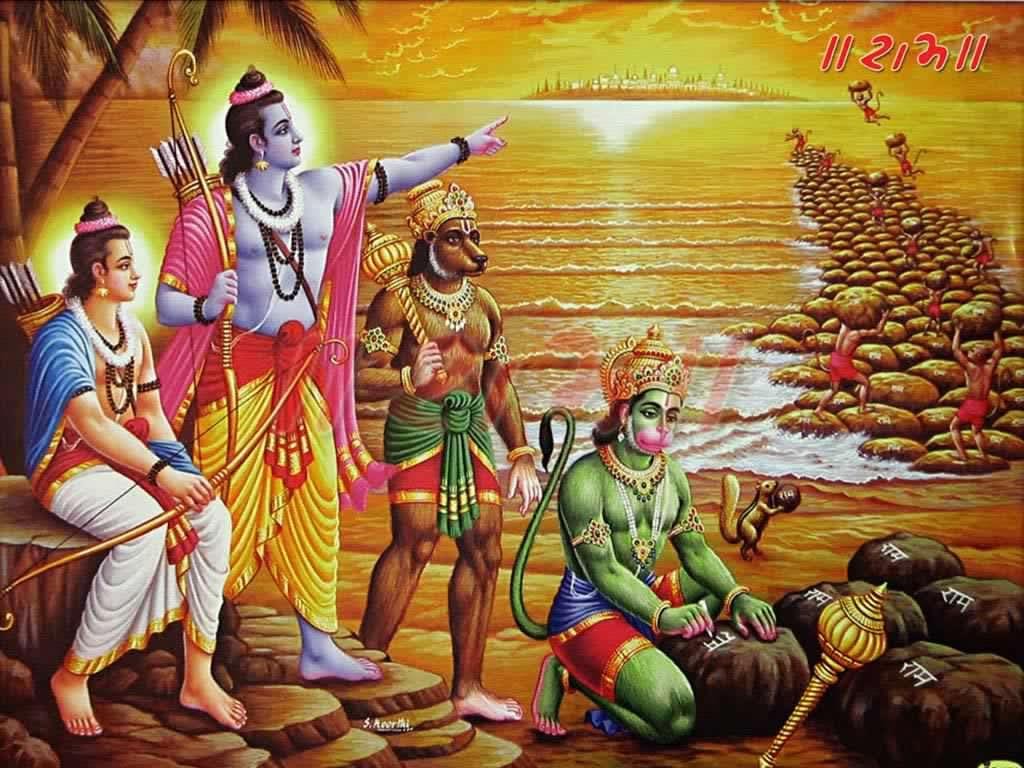
This group traveled all the way to the southernmost tip of India, where they encountered the ocean with the island of Lanka (modern day Sri Lanka) visible in the horizon. The group wished to investigate the island, but none could swim or jump so far. However, Jambavan who knew from prior events that Hanuman could perform such a feat with ease, lifted his childhood curse.
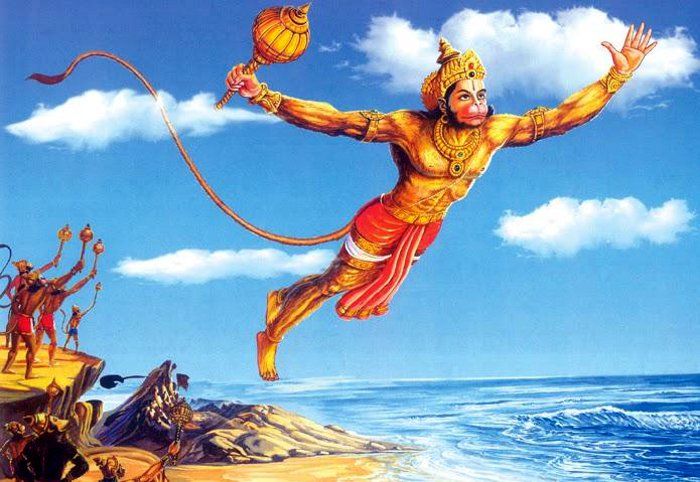
The curse lifted, Hanuman flew across the narrow channel to Lanka. Upon landing, he discovered a city populated by the Lanka king Ravana and his demon followers, so he shrunk himself down to the size of an ant and sneaked into the city. After searching the city, he discovered Sita in a grove, guarded by demon warriors. When they all fall asleep, he met with Sita and discussed how he came to find her. She revealed that Ravana kidnapped her and was forcing her to marry him soon. He offered to rescue her but Sita refused and stated that her husband must do it.
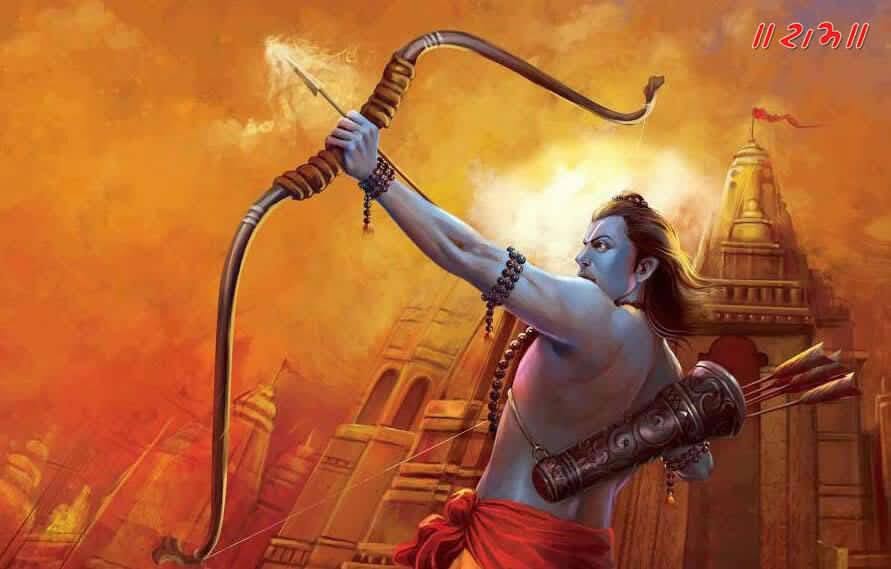
What happened next differs by account, but a common tale is that after visiting Sita, he started destroying the grove, prompting in his capture. Ravana ordered his servants to light Hanuman’s tail on fire as torture for threatening his safety. However, every time they put on an oil-soaked cloth to burn, he grew his tail longer so that more clothes needed to be added. This continued until Ravana had enough and ordered the lighting to begin. However, when his tail was lit, he shrank his tail back and broke free of his bonds with his superhuman strength. He jumped out a window and jumped from rooftop to rooftop, burning down building after building, until much of the city was ablaze.
After this success, Hanuman came back to Kishkindha where Rama had been waiting all along for some news. Upon hearing that Sita was safe and was waiting for him, Rama gathered the support of Sugriva’s army and marched for Lanka. Legends credit Nala and his brother Nila for the creation of Rama Setu, a bridge across the ocean between Rameswaram and Lanka.The sea-god Varuna told Rama that both of them possessed the ability to make stones float on water. Thus began the legendary Battle of Lanka where Ravana and his kingdom were destroyed and Sita was rescued. Throughout the long battle, Hanuman played a role as a general in the army.
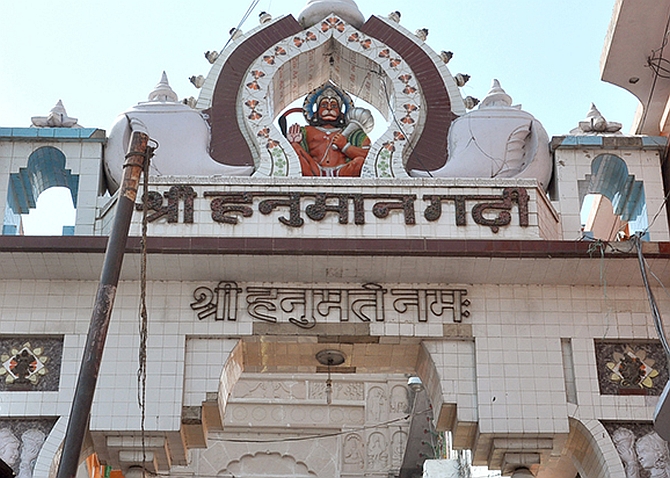
When Lord Rama returned to Ayodhya after conquering Ravana, Shri Hanuman started living in an area which people named as Hanumangarh in the later years. From here he used to protect Ramkot, as the kingdom was known. A temple was built here in the 10th century and named Hanuman Garhi which today is one of the most important temples in the city of Ayodhya. In the main temple, Pawanputra (son of the wind) Hanuman sits in the lap of Mata (Mother) Anjani. This huge temple and its residential complex is spread over 13 acres. It is a custom that before visiting Ram Janmabhoomi (birth place) one should first pay a visit to Lord Hanuman temple.
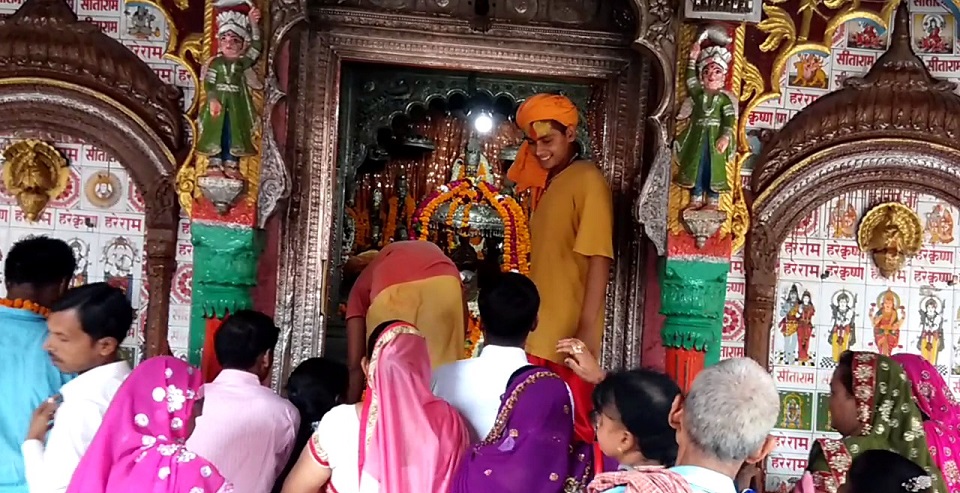
As we eagerly wait for the construction to start and the Ram Mandir to be completed in a few years time, it’s also time for each of us to plegde our commitment to the values that this great country of ours has always stood for. Unity in diversity.
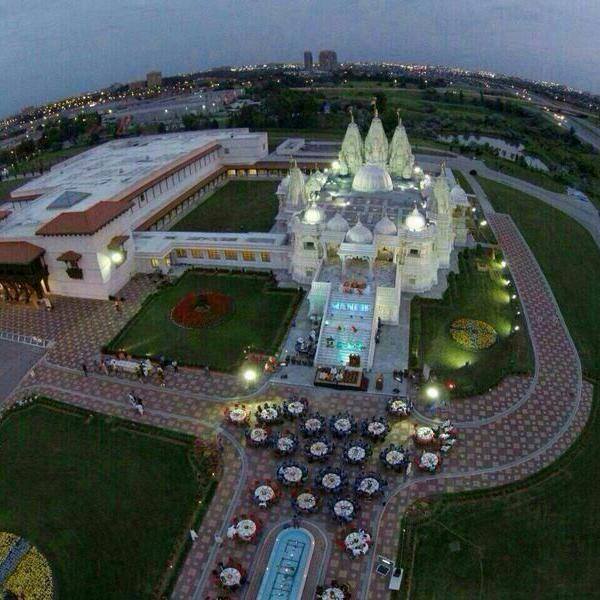
And when the temple is ready for us to pay our respects to Lord Ram by visiting Ayodhya, it would probably look something similar. The Ram Janmabhoomi complex with the Ram Temple on 10 acres of land and the rest 57 acres housing four more temples dedicated to Lakshmana, Sita, Hanuman and Ganesha inside the Nakshatra Vatika with 27 Nakshatra trees.
Ayodhya & Ram Janmabhoomi. India’s pride and destination next for you as a traveler.
If you enjoyed reading, PIN it for later reference!
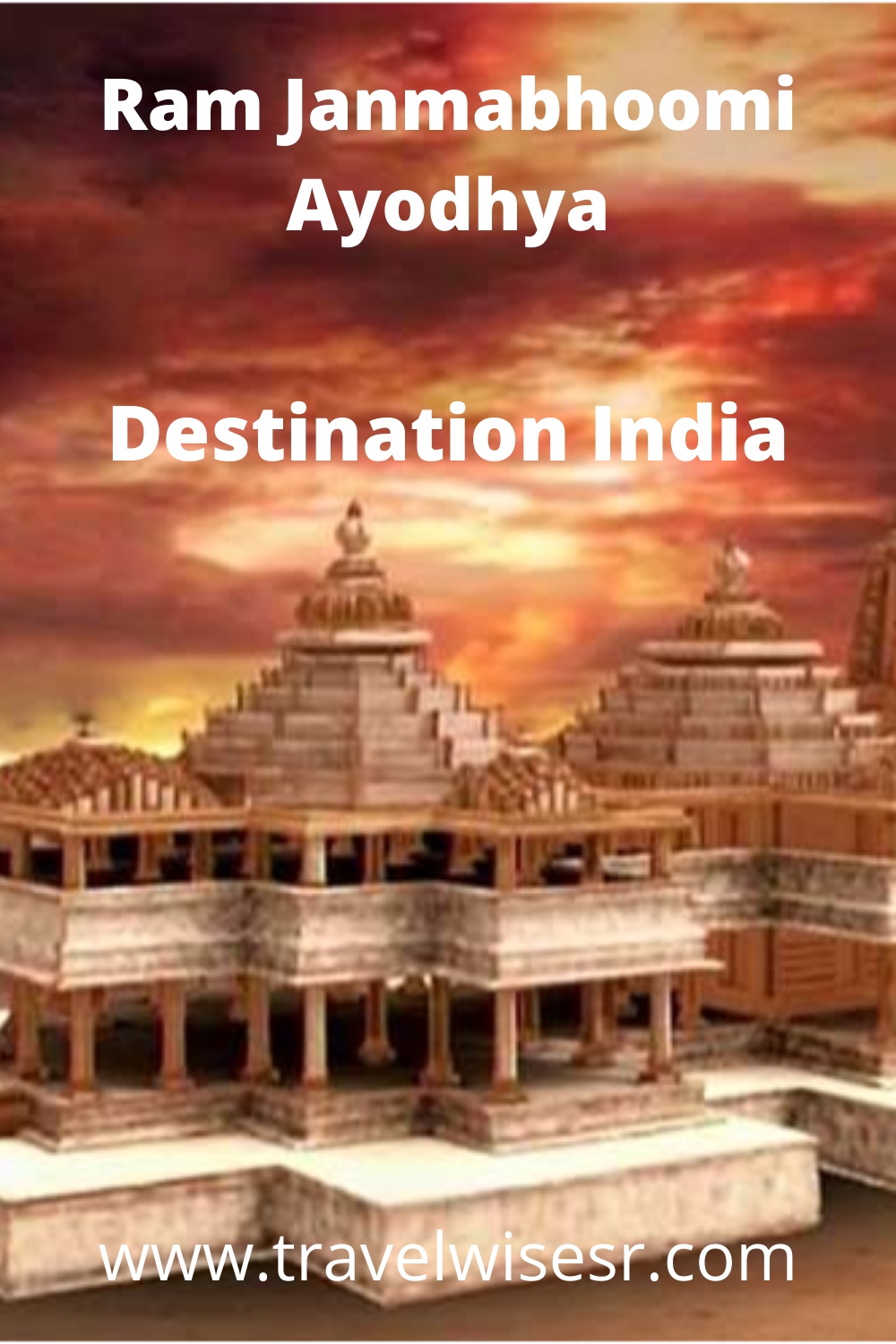

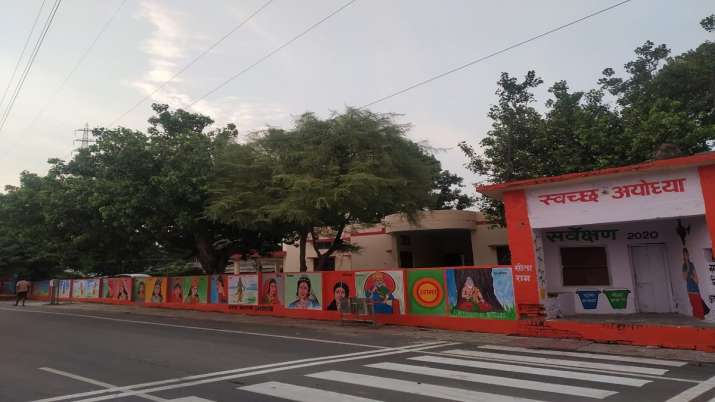


The Ram Janmabhoomi issue has been long debated. However, as you rightly said, when it comes to the locals, they have always been friendly. I happened to have visited the proposed site last year and I did see a lot of positivity towards the temple. Ram ki paidi was a delightful find for its significance as well as the little temples along its banks.
how interesting! I started reading Indian epic Ramayana as a part of my education and these were spoilers for me but now I look forward to know more about it
So nice Lyosha to hear that.
This was really interesting to read. It’s all new to me, but I LOVE learning about other cultures. Thank you for taking the time to break this down and explain it all for those of us who are interested in better understanding what is happening in a different corner of the world.
Thanks Britt.Happy you found it useful.
What an amazingly beautiful temple. India is a country with such a rich history. Thank you for telling us the story of Rama!
Thanks Nina.My pleasure sharing.
Such beautiful stories from the Hindu mythology. I have always been fascinated by the stories of Ramayan and Mahabharata. They both make wonderful teachings with interesting stories. I have never been to Ayodhya till now. I wish to visit it someday. Also, laying the stone for the Rama Mandira was a huge step and a historical moment for India and I really want to visit it when it gets completed and is built.
Yeah even I am yet to visit although I have stayed so close for many years. Yes these stories are so inspiring Raksha.
Wow! The mock up looks amazing! This will truly be a marvel when it’s completed. India is such a fascinating country.
Wow! A lot of new information about this wonderful culture that I had no idea about. I have never been to India but would love to some time soon.
You are welcome Lourdes.
An incredibly beautiful and interesting reading. Thanks, I learned a lot. India is mysterious and beautiful.